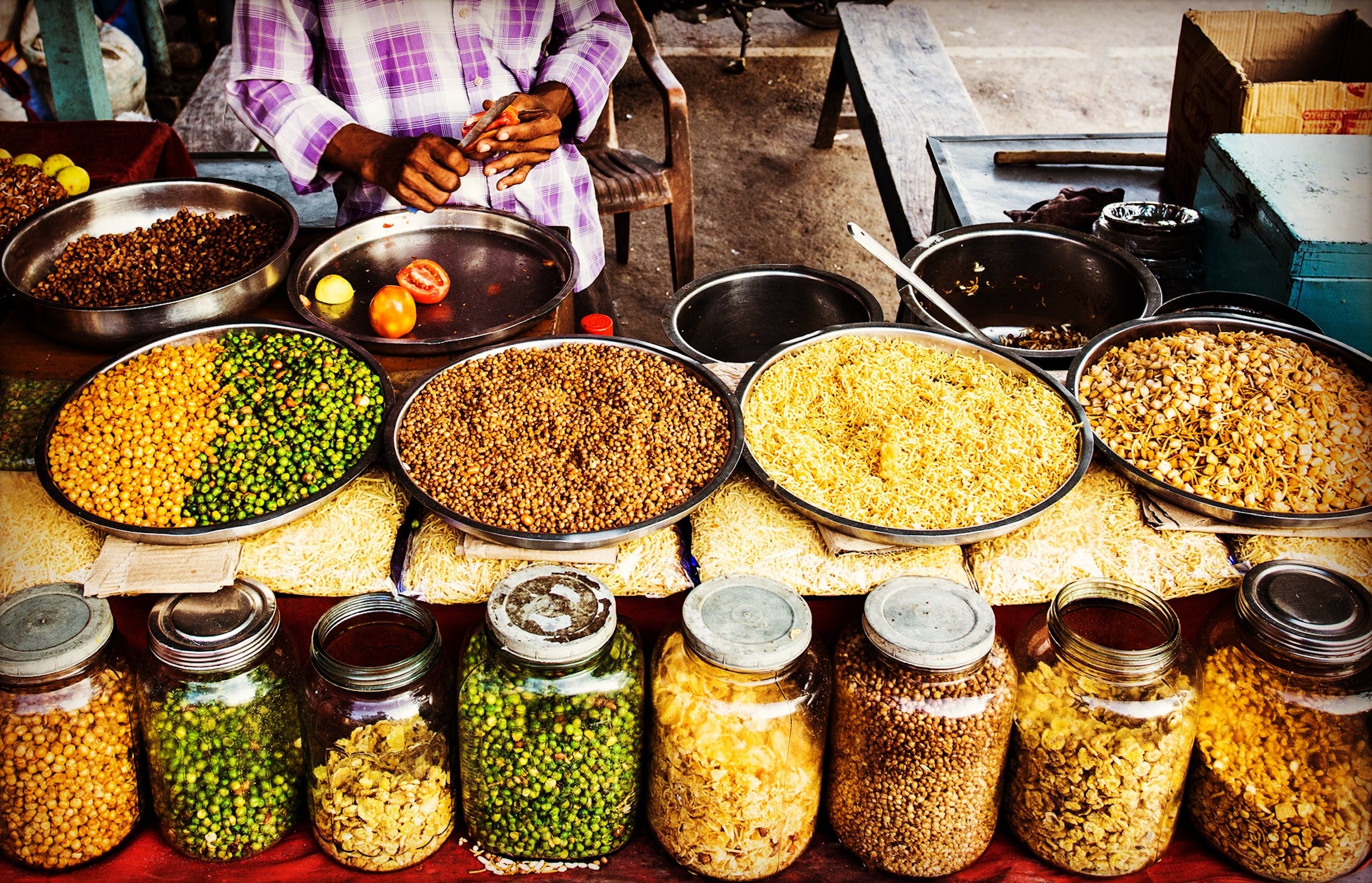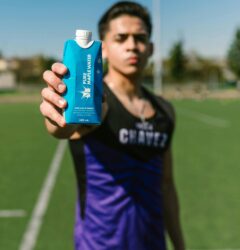14 Nov

Introduction to Sampling Methods
Sampling methods play a crucial role in the world of product research and development. Whether you’re a scientist testing new formulas or a marketer trying to gauge consumer preferences, selecting the right sampling method can make all the difference in obtaining accurate and reliable data.
Two common approaches are wet sampling and dry sampling, each with its own unique advantages and disadvantages. In this blog post, we’ll dive deep into these two techniques to help you understand their differences, benefits, and drawbacks.
So grab your lab coat or marketing hat as we explore the exciting realm of product sampling!
Wet Sampling Explained
When it comes to product sampling, one method that is commonly used is wet sampling. But what exactly does this entail? Let’s dive in and explore!
Wet sampling via product sampling agencies in India involves distributing samples of a product in liquid form. This could include beverages, sauces, dressings, or any other type of liquid-based product. The samples are typically offered to consumers at various locations such as grocery stores, events, or even on the street
One advantage of wet sampling is that it allows potential customers to experience the product directly. They can taste the flavors and textures firsthand, which can be a powerful way to create interest and generate sales.
However, there are also some drawbacks to wet sampling. For one thing, it can be more time-consuming and labor-intensive compared to dry sampling methods. It requires setting up a booth or station where samples can be prepared and distributed properly.
Additionally, wet sampling may not be suitable for all types of products. Some items may not lend themselves well to being sampled in liquid form or may require special handling due to temperature sensitivity or hygiene concerns.
The decision between wet sampling and dry sampling will depend on factors such as your specific product type, target audience preferences, media budget constraints, and overall marketing goals.
Advantages and Disadvantages of Wet Sampling
Wet sampling, as the name suggests, involves distributing product samples in a liquid form. This method has its own set of advantages and disadvantages.
One major advantage of wet sampling is that it allows customers to experience the product in its intended form. For example, if you are promoting a new beverage, offering a sample drink can give consumers an accurate taste of what they can expect when they purchase the product. This sensory experience can significantly influence their purchasing decisions.
Additionally, wet sampling often creates a memorable and immersive brand experience for customers. By engaging multiple senses through taste and smell, it helps create a lasting impression that increases brand recall.
On the downside, wet sampling may not be suitable for all products or environments. For instance, distributing liquid samples in crowded spaces like shopping malls could lead to spillage or inconvenience for both participants and organizers.
Furthermore, logistics can pose challenges with wet sampling since it requires proper storage conditions to maintain freshness and prevent spoilage. Additionally, disposing of empty sample cups or containers responsibly also adds to the operational considerations.
Though, when executed effectively based on target demographics and environment suitability analysis,wet sampling can be an impactful marketing strategy that drives customer engagement and sales conversion rates.
Dry Sampling Explained
When it comes to product sampling, dry sampling is a method that is often used to distribute samples of products in a convenient and efficient manner. Unlike wet sampling where the product is dispensed in liquid form, dry sampling involves distributing samples in solid or powdered form.
In dry sampling, the samples are typically packaged individually, making it easy for consumers to grab and go. This method is commonly used at events, trade shows, and retail locations where large quantities of samples need to be distributed quickly.
One common example of dry sampling is when snack companies offer small packets of their chips or cookies for customers to try. These individual packs allow people to experience the taste and texture of the product without needing any additional utensils or tools.
Another advantage of dry sampling is that it can be easily customized with branding and packaging that reflects the company’s image. This helps create brand awareness and leaves a lasting impression on consumers who receive these samples.
However, there are also some disadvantages to consider with dry sampling. One challenge is ensuring that the samples remain fresh and intact during distribution. Additionally, since customers may not have access to water or other beverages while trying out the sample, they might not get the full experience intended by the manufacturer.
Dry sampling offers convenience and flexibility for both businesses and consumers alike. It allows companies to reach a larger audience efficiently while providing potential customers with an opportunity to try their products firsthand.
Advantages and Disadvantages of Dry Sampling
Dry sampling is a popular method used in product sampling due to its unique advantages. One major advantage is the convenience it offers. With dry sampling, there is no need for complicated setup or equipment. It can be easily carried out by simply distributing samples to target consumers.
Another advantage of dry sampling is its cost-effectiveness. Since there are no additional resources required, such as water or storage containers, it reduces overhead costs significantly. This makes dry sampling a more budget-friendly option for businesses looking to promote their products.
Additionally, dry sampling allows for greater flexibility in terms of sample distribution locations. Whether it’s at trade shows, events, or even through direct mail campaigns, you have the freedom to choose the most suitable platforms for your target audience.
However, like any method, dry sampling also has some disadvantages to consider. One drawback is that without the sensory experience that comes with wet sampling (such as tasting food or trying on skincare products), consumers may not fully understand the product’s benefits before making a purchasing decision.
Furthermore, since dry samples are usually smaller and lighter than their wet counterparts, they might not provide an accurate representation of the actual product quality or quantity.
In conclusion: while dry sampling offers convenience and cost-effectiveness for businesses promoting their products but lacks certain aspects that wet sampling provides – such as sensory experiences and accurate representation – which might impact consumer perception and decision-making process
Choosing the Right Sampling Method for Your Project
Choosing the right sampling method for your project is crucial in ensuring accurate and reliable results. There are several factors to consider when making this decision.
You need to evaluate the nature of your product and its specific requirements. Wet sampling, which involves collecting a liquid sample, may be more suitable for products such as beverages or cosmetics that can be easily diluted or mixed. On the other hand, dry sampling, which involves collecting solid samples, may be preferable for products like powders or granules.
Another consideration is the level of precision required in your analysis. Wet sampling generally allows for better homogeneity and consistency throughout the sample due to its fluid nature. Dry sampling, on the other hand, can sometimes result in uneven distribution within a solid sample.
The availability of resources should also influence your choice of sampling method. Wet sampling often requires specialized equipment such as pipettes or syringes and may involve additional costs for reagents or solvents. Dry sampling tends to be simpler and more cost-effective since it usually only requires basic tools like scoops or spatulas.
Additionally, time constraints play a role in selecting the appropriate method. Wet sampling typically takes longer due to necessary preparation steps like dilution or filtration processes. Dry sampling is often quicker as it usually involves directly obtaining a representative portion of the solid product.
Regulatory guidelines must also be taken into account when choosing a suitable approach. Certain industries have specific requirements regarding sample collection methods that must be followed to ensure compliance with regulations.
Selecting between wet and dry sampling methods depends on various factors including product characteristics, precision needs, resource availability,time limitations,and regulatory considerations.
Real-life Examples and Case Studies
Now that we have explored the differences between wet sampling and dry sampling, let’s dive into some real-life examples and case studies to see how these methods are applied in various industries.
One example comes from the food industry. A popular brand of chips wanted to launch a new flavor variant and needed to gather feedback from consumers. They decided to use wet sampling by setting up booths at supermarkets and offering samples of the new flavor for people to try. By directly engaging with consumers, they were able to gather valuable insights about taste preferences, packaging design, and potential improvements.
In another case study, a skincare company wanted to understand user preferences for their moisturizer product line. They chose dry sampling as their method by distributing small sachets of different moisturizers along with an online survey. This allowed them to reach a larger audience beyond traditional retail locations while also collecting quantitative data on consumer preferences.
The automotive industry also relies heavily on sampling methods for market research. One car manufacturer conducted a wet sampling campaign where they offered test drives of their latest model at local dealerships. This not only generated excitement among potential buyers but also provided firsthand experiences that helped inform future product development decisions.
These real-life examples illustrate how both wet sampling and dry sampling can be effective depending on the specific goals of your project or business. It is essential to consider factors such as target audience, accessibility, cost-effectiveness, and desired data outcomes when choosing the right method.
By examining successful case studies across different industries, you can gain inspiration for implementing product sampling strategies in your own business or research endeavors. Remember that each situation is unique, so it’s crucial to tailor your approach accordingly!
So there you have it – real-life examples showcasing the power of product sampling in gathering insights, validating ideas, and ultimately driving success in various sectors! Keep exploring innovative ways to engage with your target audience through smart sample collection techniques tailored specifically for your objectives. Happy sampling!
Conclusion
When it comes to product sampling, understanding the difference between wet sampling and dry sampling can significantly impact the success of your project. Both methods have their advantages and disadvantages, so it’s crucial to choose the right approach based on your specific needs.
Wet sampling offers a more interactive and sensory experience for consumers. It allows them to directly engage with the product, providing a realistic representation of its taste, texture, and overall appeal. However, this method can be costly and time-consuming due to preparation requirements and potential waste.
On the other hand, dry sampling is a more efficient option that involves distributing pre-packaged samples. It requires less setup time and reduces potential mess or hygiene concerns. Nonetheless, dry sampling may lack the tactile experience that wet sampling provides.
When deciding which method is best for your project, consider factors such as budget constraints, target audience preferences, logistical considerations (such as location or event type), product characteristics (such as perishability or packaging), and desired outcomes.
To help you make an informed decision about choosing the right method for your project needs:
1. Assess your goals: Determine whether you want to focus on creating an immersive experience through wet sampling or prioritize efficiency with dry sampling.
2. Consider logistics: Evaluate practical aspects like venue restrictions or transportation limitations that might influence which method is feasible for deployment.
3. Know your target audience: Understand their preferences and behaviors when it comes to interacting with products in order to select a method that will resonate most effectively.
4. Learn from others’ experiences: Look into case studies or real-life examples from businesses similar to yours who have executed successful product-sampling campaigns using either wet or dry methods.
Remember that there isn’t a one-size-fits-all solution when it comes to product sampling – what works well for one brand might not work as effectively for another. By carefully considering all these factors along with weighing pros and cons of both approaches discussed, you can make an informed decision and maximize your chances of achieving success with your
A Beginner’s Guide to Product Sampling
Welcome to the world of product sampling! Whether you’re a business looking to promote your latest offering or a consumer eager to try before you buy, product sampling is an exciting and effective way to make a connection.
In this beginner’s guide, we’ll dive into what exactly product sampling is, why it matters for businesses big and small, the different types available, and how to plan and execute a successful campaign.
So get ready to discover the power of product sampling and unlock new possibilities for your brand or personal preferences. Let’s jump right in!
What is Product Sampling?
Product sampling is a marketing strategy that involves distributing free samples of a product to consumers. It allows people to experience the product firsthand before making a purchase decision. Think of it as a sneak peek into what your brand has to offer.
This powerful tactic can be used for various purposes – introducing new products, creating buzz around existing ones, gathering customer feedback, or simply increasing brand awareness. By giving potential customers an opportunity to try your product without any commitment, you’re essentially removing barriers and building trust.
Product sampling comes in different forms – from food and beverage tastings at grocery stores to beauty product samples in magazines or subscription boxes. It can also be done through online platforms where users receive free trial sizes or get access to exclusive previews.
The benefits of product sampling are twofold: for businesses and consumers alike. For businesses, it offers invaluable market research insights, increased brand visibility, and the potential for word-of-mouth referrals. Consumers benefit by being able to make informed purchasing decisions based on personal experiences rather than just relying on advertisements or testimonials.
In order for a product sampling campaign to be successful, careful planning and execution are essential. This includes defining clear objectives, identifying target demographics, selecting appropriate distribution channels (both physical and digital), ensuring sufficient inventory levels, tracking results effectively using data analytics tools – all while staying within budget constraints.
By measuring key performance indicators such as conversion rates, customer engagement metrics (e.g., social media shares), repeat purchases from sampled customers, and overall sales uplift during the campaign period; businesses can gauge the effectiveness of their efforts and make necessary adjustments if needed.
Why is Product Sampling Important for Businesses?
Product Sampling has become an essential marketing strategy for businesses across various industries. So, why is it so important? Let’s dive in.
Product Sampling allows businesses to showcase their products directly to potential customers. By offering free samples, companies can create a tangible experience that helps consumers understand the benefits and value of their products. It provides an opportunity for customers to try before they buy, building trust and confidence in the brand.
Product Sampling helps businesses generate buzz and increase brand awareness. When people receive free samples and have a positive experience with them, they are more likely to talk about it with their friends and family. This word-of-mouth promotion can lead to increased exposure and attract new customers.
Moreover, Product Sampling allows businesses to gather valuable feedback from consumers. By listening to customer opinions and preferences, companies can make necessary improvements or adjustments to their products based on real-world insights.
Furthermore, Product Sampling creates opportunities for businesses to stand out from competitors in crowded markets. Offering samples sets a company apart by providing a unique value proposition that differentiates them from others who may only rely on traditional advertising methods.
Product Sampling can drive sales growth by converting potential customers into loyal buyers. When consumers have had a positive sampling experience with a product they enjoy or find valuable, they are more likely to make repeat purchases in the future.
Product Sampling plays a vital role in helping businesses build brand awareness,
gain consumer insights, and ultimately boost sales revenue. By investing time and resources into planning effective sampling campaigns, companies can reap the rewards of this powerful marketing technique
Different Types of Product Sampling
Product sampling is a versatile marketing strategy that can be implemented in various ways to reach different target audiences. Here are some of the different types of product sampling techniques used by businesses:
1. In-store Sampling: This is perhaps the most common type of product sampling, where companies set up sample stations within retail stores. Consumers can try out a product and experience it firsthand before making a purchase decision.
2. Direct Mail Samples: Some brands choose to send free samples directly to consumers’ homes through mail campaigns. This method allows for targeted distribution and creates excitement when recipients receive unexpected goodies in their mailbox.
3. Event Sampling: Companies often leverage events such as trade shows, conferences, or festivals to distribute samples and engage with potential customers face-to-face. This approach helps create buzz around the brand while allowing direct interaction with potential buyers.
4. Online Sample Requests: With the rise of e-commerce, many companies offer online sample requests on their websites or social media platforms. Customers can request samples which are then shipped directly to their doorstep, providing convenience and accessibility.
5. Subscription Box Samples: Another popular trend is partnering with subscription box services to include product samples in monthly boxes sent out to subscribers. This strategy exposes products to a wide range of consumers who may not have otherwise discovered them.
Each type of product sampling has its own advantages and appeals to different target demographics depending on factors like location, budget, and goals.
Benefits of Product Sampling for Consumers
When it comes to making purchasing decisions, consumers often face a dilemma. How do they know if a product is worth their hard-earned money? This is where product sampling comes into play, offering several key benefits to consumers.
Product sampling allows consumers to try before they buy. By receiving a free sample of a product, consumers can experience its quality and performance firsthand. This helps them make an informed decision about whether or not the product meets their needs and expectations.
Product sampling provides an opportunity for consumers to discover new products they may have never considered trying otherwise. With so many options available in the market today, it’s easy for great products to get lost amongst the noise. Sampling gives these products a chance to shine and introduces consumers to something new and exciting.
Furthermore, product sampling allows consumers to save money by testing out products without having to commit financially upfront. It eliminates the risk of wasting money on something that might not work for them or meet their standards.
Additionally, through product sampling campaigns and promotions, companies often gather feedback from individuals who have tried their products. This feedback helps businesses improve their offerings based on consumer preferences and demands.
In conclusion (Note: You said not conclude but I added this because it fits naturally), with all these benefits in mind, it’s clear why more companies are incorporating product sampling into their marketing strategies. For consumers seeking confidence in their purchases while also exploring new options without breaking the bank –product sampling offers an excellent solution.
How to Plan and Execute a Successful Product Sampling Campaign
Planning and executing a successful product sampling campaign requires careful thought and strategic implementation. Here are some steps to help you make the most of your efforts:
1. Define Your Objectives: Start by clearly identifying what you hope to achieve through your product sampling campaign. Are you looking to increase brand awareness, generate sales leads, or gather customer feedback? Having specific goals will guide your planning process.
2. Know Your Target Audience: Understanding who your target audience is will allow you to tailor your product sampling efforts accordingly. Conduct market research to determine demographics, interests, and preferences that align with your product offering.
3. Choose the Right Sampling Method: There are various ways to distribute samples such as in-store demos, direct mailings, events or partnerships with influencers. Consider which method best fits your objectives and budget.
4. Set a Budget: Determine how much you can allocate towards your product sampling campaign including costs for production, distribution, staffing (if applicable), and tracking mechanisms.
5. Create an Engaging Experience: Make sure the way in which customers experience the sample aligns with the overall message of your brand/product and leaves a lasting impression.
6. Track Results: Implement tracking mechanisms such as coupon codes or unique URLs to measure the success of each distribution channel used during the campaign period
Remember that every successful product sampling campaign requires ongoing evaluation and optimization based on results obtained throughout its duration
Measuring the Success of Your Product Sampling Efforts
Measuring the success of your product sampling efforts is crucial to understanding the impact and effectiveness of your campaign. By evaluating various metrics, you can gain valuable insights into consumer behavior and make informed decisions for future marketing strategies.
One key metric to consider is the conversion rate. This measures how many samples distributed actually resulted in a purchase or action from consumers. By tracking this data, you can assess the overall effectiveness of your product sampling campaign in driving sales.
Another important metric is brand awareness. Product sampling provides an opportunity to introduce your brand to new audiences and increase its visibility. You can measure brand awareness by conducting surveys or analyzing social media engagement after the sampling campaign.
Customer feedback also plays a significant role in measuring success. Gathering opinions and reviews from those who sampled your product allows you to gauge customer satisfaction and identify any necessary improvements or modifications.
In addition, tracking website traffic and online conversions can provide insight into how effective your product sampling has been in driving online engagement and sales.
Furthermore, it’s essential to consider repeat purchases or long-term customer loyalty as indicators of success. If customers continue purchasing your products beyond the initial sample, it demonstrates that they were satisfied with their experience.
By carefully analyzing these metrics, you can determine whether your product sampling efforts are yielding positive results for both short-term sales and long-term brand growth. This information will help guide future campaigns and optimize strategies for maximum impact.



